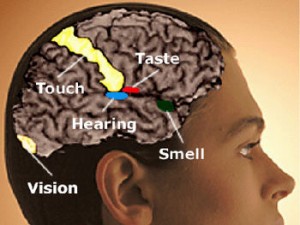Causes of Synesthesia
Synesthesia may be referred to as the feeling derived in one part of the body or a lasting effect on one sense based on independent stimulation of another area of the body or a totally different sensory organ. Some experts view synesthesia and the causes of synesthesia as purely neurological while others are too confused to make any pronouncement on the matter. Synesthesia is both intriguing and uncommon, and to date, those studying the condition have come to the conclusion that it is somewhat hereditary. In addition, research has shown that the condition is more common among females than males. Check out the video below from Go Cognitive, which showcases expert Jamie Ward explaining cases in which the condition can be acquired.
Synesthesia Causes – Causal vs. Correlative
Researchers have for many years speculated about synesthesia causes. With advances in medical technology however, scientists are now able to use molecular genetic tools, brain-imaging and data from behavioral studies to assist in their research. Eventually, it is hoped that a good understanding of the causes of synesthesia will be achieved.
An individual who experiences synesthesia is referred to as a synesthete. With reports of one in every 2,000 individuals being a synesthete, many have reported their experiences with synesthesia as being pleasant and neutral. Some experts on the subject have also alluded to one in every 300 individuals having some variation of synesthesia.
Despite any clear causes of synesthesia, research has alluded to the condition being involuntary and occurring without much warning. The episodes tend to be somewhat generic and consistent, and are extremely memorable and laden with a great deal of affect. Some synesthetes do not see their condition as strange or different, while others avoid sharing their experiences out of fear of being mocked and stereotyped.
Type-Based Neurological Causes?
Although the causes of synesthesia are still largely unknown, what is known is that synesthesia takes many forms. Over 60 forms of the condition have allegedly been reported, many of which have however not been scientifically researched or evaluated. One of the most popular forms of synesthesia is that of grapheme-color.
A synesthete with grapheme-color synesthesia perceives letters and numbers as having a specific color. The letter ‘A’, for example, is typically perceived as being red. There is evidence that this particular type of synesthesia is caused by excess interconnectivity in the visual cortex of the brain. The picture below, from Kenyan College’s page on synesthesia, provides perspective of the relative location in the brain from which each sense is derived.

It is believed that synesthetes happen to share a number of traits including: confusing left and right; a horrible sense of direction; they have an extraordinary memory but might experience a lot more migraines than the general populace; they constantly strive for perfection; they may be a lot more ticklish than the average person; they are usually introverts but extremely creative and talented in the visual and performing arts.
Condition Treatment
Not every synesthete will share the same experiences, and treatment is not necessarily something most synesthetes are in a hurry to obtain. For those still exploring synesthesia causes and deeper research into treatment for the condition, hypnosis has so far produced the best results. For those looking to find a cure, the research is still ongoing. To learn more about specific tests for synesthesia, visit our homepage.




